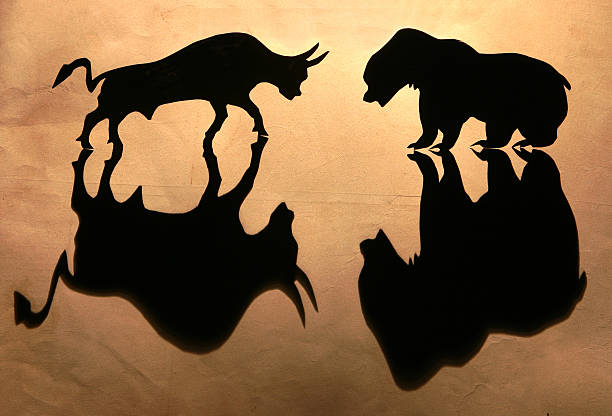Table of Contents
Introduction
In the intricate world of finance, two terms stand out as pillars that shape market trends and investor behavior: “Bull” and “Bear” markets. Understanding these terms is pivotal for anyone venturing into the realm of investments. This article takes you on a deep dive into the concepts of bull and bear markets, providing insights, strategies, and key takeaways to help you navigate these dynamic market trends with confidence.
Understanding Bull and Bear Markets
The essence of comprehending “Understanding Bull and Bear Markets” lies in decoding the shifts in market sentiment and the subsequent impact on asset prices. Both bull and bear markets are phases within the financial markets, and they depict contrasting trends that are often fueled by investor psychology, economic indicators, and global events.

Bull Markets: Riding the Optimism Wave
In a bull market, optimism prevails, and asset prices experience sustained upward momentum. Investors have confidence in the economy, leading to increased buying activity. Several factors contribute to a bull market, such as robust economic growth, low unemployment rates, and strong corporate earnings. During these phases, opportunities for capital growth are abundant, and investors tend to take on higher risks, anticipating higher returns. Learn how to trade in sideways market with this book Click here

Bear Markets: Navigating the Downturn
Conversely, bear markets are characterized by pessimism and prolonged downward trends in asset prices. These periods often witness a decline of at least 20% from recent highs. Economic uncertainty, rising unemployment, and declining corporate profits can trigger bear markets. During such times, fear takes precedence, and investors seek to preserve their capital by adopting more conservative strategies.

Key Differences Between Bull and Bear Markets
| Aspect | Bull Market | Bear Market |
|---|---|---|
| Investor Sentiment | Optimistic and Positive | Pessimistic and Negative |
| Economic Indicators | Strong GDP, Low Unemployment | Weak GDP, High Unemployment |
| Asset Price Trends | Upward Momentum | Downward Spiral |
| Investor Behavior | Risk-Taking | Risk-Aversion |
| Strategy | Capital Growth through Investments | Capital Preservation and Safety |
Navigating the Waves: Strategies for Investors
Investing During Bull Markets:
- Diversify Your Portfolio: While optimism is high, consider diversifying your portfolio across various sectors to mitigate risks.
- Stay Informed: Keep a close eye on economic indicators and market news to make informed decisions.
- Avoid Overconfidence: Although profits are attractive, refrain from excessive risk-taking and maintain a balanced approach.
Safeguarding During Bear Markets:
- Hold onto Quality Assets: Keep investments in fundamentally strong assets that have a history of weathering downturns.
- Consider Defensive Stocks: Defensive sectors like utilities and consumer staples tend to perform relatively well during bear markets.
- Reevaluate Portfolio: Assess your portfolio’s risk exposure and make adjustments based on your risk tolerance and investment goals.
Conclusion: Navigating Volatility with Confidence
Understanding bull and bear markets is essential for any investor looking to thrive in the world of finance. By grasping the dynamics, recognizing the signals, and implementing informed strategies, you can navigate the unpredictable seas of market trends with confidence. Remember, markets are cyclical, and embracing a long-term perspective is key to enduring and prospering through both bull and bear cycles.

Frequently Asked Questions (FAQs)
Q: How long do bull and bear markets typically last?
A: The duration varies, but bull markets can last several years, while bear markets can range from months to over a year.
Q: Can individual investors benefit from bear markets?
A: Yes, by adopting short-selling strategies or by purchasing undervalued assets, investors can capitalize on declining prices.
Q: Are there any indicators that predict market shifts?
A: While not foolproof, indicators like the yield curve, unemployment rates, and consumer confidence can offer insights into potential market shifts.
Q: What role does government policy play during market fluctuations?
A: Government interventions, such as interest rate adjustments or stimulus packages, can influence market trends and stabilize the economy.
Q: How can emotions affect investment decisions during market fluctuations?
A: Emotional responses to market swings can lead to impulsive decisions. Staying rational and well-informed is crucial for successful investing.
Q: What’s the historical significance of bull and bear symbols in finance?
A: These symbols trace back to the way each animal attacks—bulls thrust upwards, symbolizing a rising market, while bears swipe downwards, representing a falling market.

